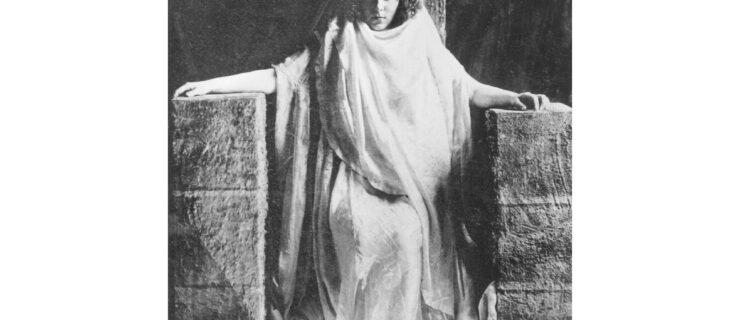Why it’s Time to Stop Saying “My Dancers”
Nearly 20 years ago now, in her essay “Against ‘On,’ ” Candace Feck (one of my mentors) suggested that the preposition “on”—as in “I set that work on new dancers” or “I created that work on company x”—inadvertently dehumanizes dancers and devalues their agency. Movement is not worn like an overcoat; it does not sit on the surface concealing the content beneath. As a choreographer who values collaboration and as a teacher of both choreography and writing, I think about that piece often. Feck calls “on” a low-profile word, but in both writing and choreography, every choice—in words or gesture—can really matter.
Years ago, another low-profile word, “my,” caught my attention. I started bristling at the equally commonplace phrase: “my dancers.” And I find it increasingly problematic, especially in light of our woefully overdue national reckoning with systemic racism and the most recent stripping of women’s agency over their own bodies.
So here’s my gripe with the possessive pronoun “my.” It suggests ownership. And authority. Efficient as it may be, the term indicates ownership not just over dances but, more alarmingly, over people and their bodily labor.
While the phrase “my dancers” may not deliberately subjugate dancers, the notion of ownership over other bodies, their work and their ideas is linked to patriarchal traditions and the legacy of slavery. With that in mind, the linguistic habit, used mostly as a shorthand—or even a term of endearment—becomes rather alarming. I can’t ignore the histories and politics of race, class and gender that underscore any inclination to discount the physical labor of people with less power.
Performer Sarah Parker has written about the structural problem in choreographic credit attribution. Despite fluid boundaries between dancers and choreographers, presenting structures and educational models tend to rely on a single-author model to credit choreographic ownership, even when work is highly collaborative. In practice, however, the term “choreography” has expanded to suggest a mode of inquiry rather than a practice of arranging. But we don’t yet have an adequate system of discussing the exchange between choreographers and dancers that is so central to the creative process.
In the U.S., with some notable exceptions, most dancers work with multiple choreographers, and many concurrently create their own work. Whereas codified movement techniques used to be tethered to a single creator (Martha Graham, Katherine Dunham, Merce Cunningham, for example), the closest things to codified techniques in recent years include William Forsythe’s Improvisation Technologies or Ohad Naharin’s Gaga, both of which offer strategies for developing complex physical skill (aka dance “technique”) by exercising independent agency in improvisational explorations. Many choreographic processes leverage such improvisational techniques as they rely on lateral dialogues rather than top-down processes.
Now, when students in my classes use “my dancers,” I usually say something like: “Even though it is a norm in this field, I don’t use that term anymore and here’s why…” Then, I encourage them to think critically about what to call their peers in a process. In essence, the dialogue between choreographer and dancer operates as an exchange that is much more lateral than hierarchical. My friend Betsy Miller deliberately reverses the traditionally assumed dancer–choreographer power dynamic in her american/woman project, in which dancers do not serve a predetermined vision. Instead, she tries to help dancers unearth their own solos through a collaborative process. This kind of mutual inquiry characterizes artists’ creative processes much more often than we may think. Dances could not happen without the dancers. They do not carry out a choreographer’s singular vision, they co-create it.
As a choreographer, I seek out dancers I admire, whose skill and intellect will enrich our process. When I developed Bigger, Faster, Better with Kendra Portier, her physical prowess made my dancing better. And I’m not sure I’ve had more fun in the studio than with Jenna Riegel and Kellie Lynch in developing Lies Come Easier, which structured playful one-upmanship inspired by the basketball game HORSE. They layered awe-inspiring—and sometimes actually impossible (they spot each other in that case)—physical feats with absurd challenges: diving into a handstand, then slowly lowering to a headstand, while singing Justin Timberlake’s “Cry Me a River” and upside-down stomping a rhythm on the studio wall. Now that those pieces have been performed by several other casts, the choreography is additive. The pieces contain the permanent stamp of the original collaborators and each new dancer inhabiting the structure. In performance, embodiment and identity are bound, visible and powerful. Dancers make physical choices that reflect the particular physics of their bodies, training histories and subjective experiences in the world. That is just as true in my work with students as it is with professional artists, none of whom are “my dancers.”
Choreographers and dancers alike should, of course, celebrate what they do. Continuing to attach names to choreographic products allows us to recognize marginalized voices in a field that has embodied identity as its center. We can, however, retire language that positions dancers as metaphoric tools used to execute a work. Might we, instead, adopt new habits that more accurately reflect the distributed process of intellectual and physical labor of dancemaking? It might require more words—“the dancers I work with” or “the dancers in this piece,” for example.
When else do the words we use betray—even undermine—the ways we understand our field, functionally, ethically and structurally? For example, the rhetoric of passion and love we so readily assign to the drive to dance sometimes makes us forget that it is indeed real work. We co-create dances with, about and because of bodies beyond our own. Now, let’s get back to work!




